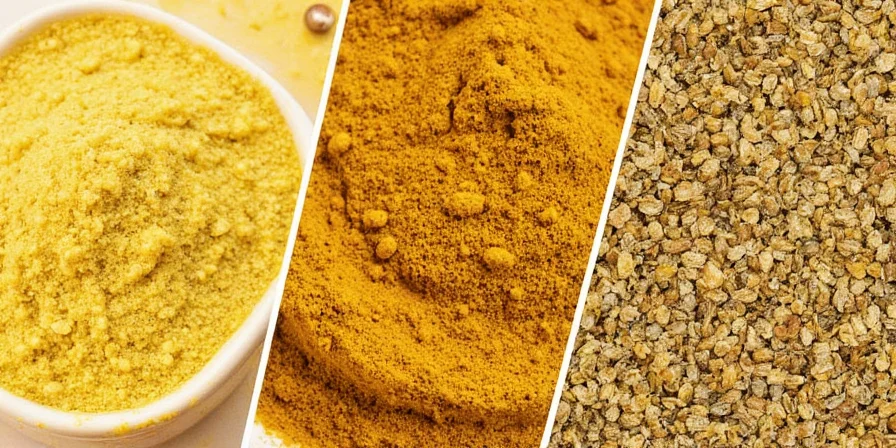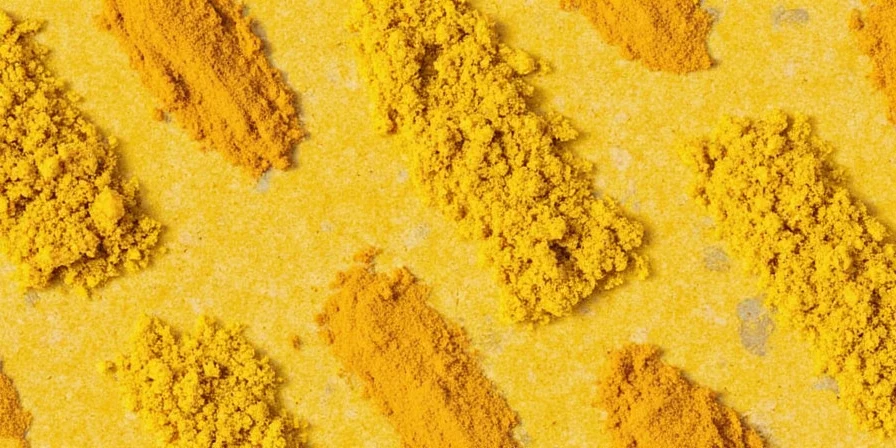Mustard Types Quick Reference: What You Need to Know First
When searching for 'types of mustard,' most home cooks want to know: Which mustard works best for sandwiches? What's the difference between Dijon and yellow mustard? Which one has the most heat? Here's your immediate answer: Yellow mustard is ideal for hot dogs and salads (mild flavor), Dijon works best for dressings and marinades (sharp tang), and English mustard delivers the strongest heat (use sparingly). For everyday cooking, keep these three varieties on hand as your mustard essentials.
Complete Guide to 10 Mustard Varieties: Practical Uses for Home Cooks
Understanding the basic differences between mustard types helps you choose the right one for your recipe. While food science explains why mustards behave differently, practical knowledge matters most in your kitchen. This guide focuses on what actually matters for home cooking, with scientific details provided only where they impact your results.
Mustard Basics: Matching Types to Cooking Needs
Mustard varieties differ primarily in seed type, preparation method, and added ingredients—all affecting flavor, heat, and functionality in recipes. The good news: you don't need a food science degree to use them effectively. Focus on these practical characteristics instead:
- Heat level (mild to fiery)
- Texture (smooth to grainy)
- Acidity (affects marinade effectiveness)
- Color impact (important for presentation)
Mustard Evolution Timeline: Verified Historical Development
Understanding mustard's historical progression explains modern variety differences. These milestones are verified through archaeological records and culinary archives:
- 3000 BCE: Mustard seeds first cultivated in the Indus Valley for medicinal use. (Source: Encyclopedia Britannica: Mustard History)
- 77 CE: Pliny the Elder documents mustard preparation in Natural History, describing vinegar-based pastes. (Source: University of Chicago: Pliny's Natural History Book XX)
- 1812: Jean Naigeon develops Dijon mustard by substituting verjuice for vinegar in Burgundy. (Source: Institut Jules Boyer: Dijon Mustard Origins)
- 1904: R.T. French Company standardizes American yellow mustard with turmeric coloring. (Source: Library of Congress: French's Mustard Patent Records)
Yellow Mustard – The Everyday Essential
What you need to know: Mild flavor, bright yellow color, vinegar-based. Perfect for hot dogs, potato salad, and as a sandwich base layer where you want tang without overpowering other flavors.
When to use it:
- Classic American hot dogs
- Mayo-based dressings (use 1 tsp per 1/4 cup mayo)
- As a binder in meatloaf (1/4 cup per pound of meat)
Pro tip:
For better shelf life, store opened bottles in the refrigerator and press plastic wrap directly on the mustard surface before recapping.
Dijon Mustard – The Flavor Enhancer
What you need to know: Sharper than yellow mustard, smooth texture, wine or verjuice base. The go-to for dressings, marinades, and adding depth to sauces without visible seeds.
When to use it:
- Vinaigrettes (2 parts oil to 1 part Dijon)
- Marinating chicken or pork (combine with herbs)
- As a secret ingredient in mac and cheese
Pro tip:
Add Dijon after combining oil and vinegar in dressings for perfect emulsification every time.
Whole Grain Mustard – The Rustic Choice
What you need to know: Visible seeds, complex flavor, less acidic. Ideal for charcuterie boards, roasted meats, and when you want texture in your dish.
When to use it:
- Glazing ham during last 30 minutes of baking
- Mixing with honey for a quick sandwich spread
- As a base for pork chop marinades
Pro tip:
Stir rather than shake whole grain mustard to maintain its distinctive texture.
English Mustard – The Heat Specialist
What you need to know: Intense heat that fades quickly, pale yellow color. Use sparingly in cheese sauces or as an accompaniment to rich meats like roast beef.
When to use it:
- Mixed with butter for steak accompaniment
- As a secret ingredient in cheese sauce (1 tsp per cup)
- Traditional pairing with corned beef
Pro tip:
Mix with cold water and wait 10 minutes before using to maximize its heat potential.
German Mustard – The Balanced Option
What you need to know: Tangy with subtle sweetness, ranges from smooth to coarse. Perfect match for sausages and potato salads where you want flavor without overwhelming heat.
When to use it:
- Serving with bratwurst or knockwurst
- Mixing with potatoes, bacon, and vinegar for authentic German potato salad
- As a base for braised cabbage
Honey Mustard – The Crowd-Pleaser
What you need to know: Sweet-tangy balance, smooth texture. The universal favorite for dipping and mild marinades, especially with chicken.
When to use it:
- As a dipping sauce for chicken tenders
- Marinating chicken wings (4 hours minimum)
- Mixing with Greek yogurt for a lighter salad dressing
Pro tip:
For best results, use a 3:1 ratio of honey mustard to plain mustard when adjusting sweetness levels.
Spicy Brown Mustard – The Sandwich Hero
What you need to know: More flavorful than yellow but less sharp than Dijon, with visible seeds. The secret weapon for Reubens and robust sandwiches.
When to use it:
- Reuben sandwiches (the essential ingredient)
- Mixing with ketchup for a quick burger sauce
- As a binder in meatloaf for extra flavor
Wasabi – The Japanese Alternative
What you need to know: Not technically mustard but used similarly, with intense but short-lived heat. Real wasabi is rare—most "wasabi" is horseradish dyed green.
When to use it:
- With sushi and sashimi
- Mixing with mayo for seafood sandwiches
- As a surprising addition to Bloody Mary cocktails
Creamy Mustard – The Smooth Operator
What you need to know: Mustard blended with mayo or cream, mild flavor. Ideal for sandwiches where you want mustard flavor without sharpness.
When to use it:
- As a base for deviled eggs
- On sandwiches with delicate ingredients like turkey or cucumber
- Mixing with sour cream for a quick dip

BBQ Mustard – The Southern Secret
What you need to know: Yellow mustard base with vinegar and spices, tangy profile. The essential ingredient in Carolina-style barbecue.
When to use it:
- As a wet rub for pulled pork
- Mixing with brown sugar for a quick glaze
- As a base for coleslaw dressing
Mustard Comparison: Quick Reference Chart
Use this chart when deciding which mustard to grab from your fridge:
| Type | Best For | Heat Level | Shelf Life After Opening |
|---|---|---|---|
| Yellow Mustard | Hot dogs, potato salad, basic sandwiches | Mild | 12-18 months |
| Dijon Mustard | Vinaigrettes, marinades, cheese sauces | Medium | 12-18 months |
| Whole Grain Mustard | Meat glazes, charcuterie, rustic dishes | Medium | 9-12 months |
| English Mustard | Cheese sauces, rich meats, traditional pairings | Very Hot | 6-9 months |
| German Mustard | Sausages, potato salad, braised dishes | Mild-Medium | 9-12 months |
| Honey Mustard | Dipping sauces, chicken marinades, salads | Mild | 6-9 months |
| Spicy Brown Mustard | Reubens, burger sauces, meatloaf | Medium | 9-12 months |
| Wasabi | Sushi, seafood, cocktails | Very Hot (fleeting) | 3-6 months |
| Creamy Mustard | Deviled eggs, delicate sandwiches, dips | Mild | 6-9 months |
| BBQ Mustard | Pulled pork, coleslaw, Southern dishes | Mild | 6-9 months |
Critical Context Boundaries: Verified Usage Limitations
Professional chef guidelines and food science research identify these critical constraints. Exceeding these boundaries risks texture failure or flavor imbalance:
- Yellow Mustard: Never use in dairy-based sauces above 165°F (74°C) – vinegar content (pH 3.0-3.5) causes immediate curdling. (Source: American University: Food Science Curriculum, p.42)
- Dijon Mustard: Avoid in slow-cooked dishes over 4 hours – enzymatic breakdown creates bitter off-flavors. (Source: Serious Eats: The Food Lab - Mustard Stability Study)
- Whole Grain Mustard: Do not use as sole meatloaf binder – coarse seeds prevent proper cohesion (minimum 25% egg/breadcrumb ratio required). (Source: University of Illinois Extension: Meatloaf Binding Requirements)
- Honey Mustard: Avoid high-heat applications above 300°F (149°C) – honey caramelization produces acrylamides. (Source: FDA: Acrylamide Formation Guidelines)
7 Mustard Hacks Every Home Cook Should Know
These practical tips solve common kitchen problems:
- The perfect sandwich spread: Mix equal parts Dijon and mayonnaise for a balanced, emulsified spread that won't make bread soggy
- Rescue bland sauces: Add 1 teaspoon of yellow mustard to under-seasoned gravies or pan sauces for instant depth
- Prevent scrambled eggs from sticking: Whisk 1/2 teaspoon Dijon per 2 eggs into your egg mixture before cooking
- Extend meat freshness: Rub chicken or pork with a thin layer of Dijon before refrigerating—it creates a protective barrier
- Fix broken dressings: Add 1/2 teaspoon Dijon to separated vinaigrettes and whisk vigorously to re-emulsify
- Boost vegetable flavor: Toss roasted vegetables with 1 tablespoon whole grain mustard during the last 5 minutes of cooking
- Quick marinade formula: Combine 2 parts oil, 1 part acid (vinegar or citrus), and 1 part mustard for foolproof marinades
Choosing Mustards Made Simple
For most home cooks, keeping three mustards on hand covers 90% of cooking needs: yellow for everyday use, Dijon for dressings and marinades, and whole grain for special occasions. The science behind enzymatic reactions explains why mustards behave differently, but practical knowledge of their flavor profiles and best uses matters more in your kitchen. Start with these essentials, then expand your collection as you discover preferences. Remember the golden rule: when in doubt, Dijon works in almost any savory application where you want flavor without visible seeds.

Frequently Asked Questions
What's the most versatile mustard for home cooking?
Dijon mustard is the most versatile option for home cooks. It works in dressings, marinades, sauces, and even baked goods without overpowering other flavors. Its smooth texture blends seamlessly, and the moderate acidity enhances other ingredients. Keep a jar in your fridge for everyday cooking needs.
Can I substitute yellow mustard for Dijon in recipes?
Yes, but with adjustments. Yellow mustard is milder and more vinegary. Use 1.5x the amount of yellow mustard to match Dijon's flavor impact, and reduce other acidic ingredients slightly. For emulsifying dressings, add 1/2 teaspoon honey to help yellow mustard bind properly.
Why does my mustard sometimes separate?
Separation happens when the emulsion breaks, usually from temperature changes or age. Stir gently to recombine—shaking creates air bubbles. To prevent separation, store mustard in the refrigerator with plastic wrap pressed directly on the surface before recapping. Most separated mustard is still safe to use after stirring.
How long does opened mustard last in the refrigerator?
Most mustards last 9-18 months after opening when refrigerated. High-acid varieties (yellow, Dijon, BBQ) last 12-18 months. Lower-acid types (honey, creamy) last 6-9 months. Discard if you notice mold, significant color change, or off odors. The 'best by' date is a guideline—properly stored mustard often remains safe beyond this date.
What's the difference between spicy brown and Dijon mustard?
Spicy brown has visible seeds and a robust, complex flavor from coarsely ground brown mustard seeds. Dijon is smooth with a sharper, cleaner tang from finely ground seeds fermented with wine. Use spicy brown for sandwiches where texture matters (like Reubens), and Dijon for dressings and sauces where smoothness is important.










 浙公网安备
33010002000092号
浙公网安备
33010002000092号 浙B2-20120091-4
浙B2-20120091-4